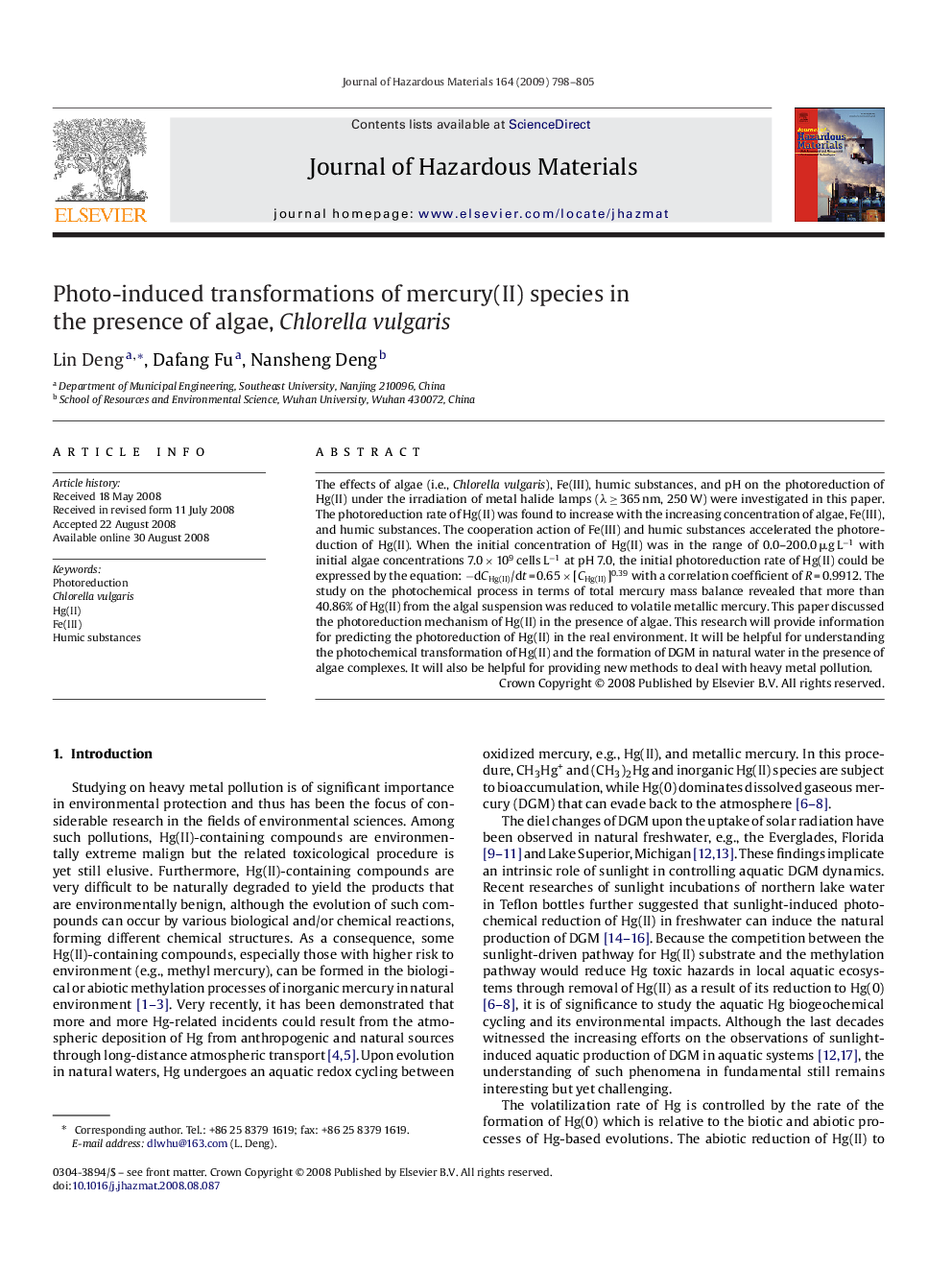| Article ID | Journal | Published Year | Pages | File Type |
|---|---|---|---|---|
| 582494 | Journal of Hazardous Materials | 2009 | 8 Pages |
Abstract
The effects of algae (i.e., Chlorella vulgaris), Fe(III), humic substances, and pH on the photoreduction of Hg(II) under the irradiation of metal halide lamps (λ â¥Â 365 nm, 250 W) were investigated in this paper. The photoreduction rate of Hg(II) was found to increase with the increasing concentration of algae, Fe(III), and humic substances. The cooperation action of Fe(III) and humic substances accelerated the photoreduction of Hg(II). When the initial concentration of Hg(II) was in the range of 0.0-200.0 μg Lâ1 with initial algae concentrations 7.0 Ã 109 cells Lâ1 at pH 7.0, the initial photoreduction rate of Hg(II) could be expressed by the equation: âdCHg(II)/dt = 0.65 Ã [CHg(II)]0.39 with a correlation coefficient of R = 0.9912. The study on the photochemical process in terms of total mercury mass balance revealed that more than 40.86% of Hg(II) from the algal suspension was reduced to volatile metallic mercury. This paper discussed the photoreduction mechanism of Hg(II) in the presence of algae. This research will provide information for predicting the photoreduction of Hg(II) in the real environment. It will be helpful for understanding the photochemical transformation of Hg(II) and the formation of DGM in natural water in the presence of algae complexes. It will also be helpful for providing new methods to deal with heavy metal pollution.
Related Topics
Physical Sciences and Engineering
Chemical Engineering
Chemical Health and Safety
Authors
Lin Deng, Dafang Fu, Nansheng Deng,
